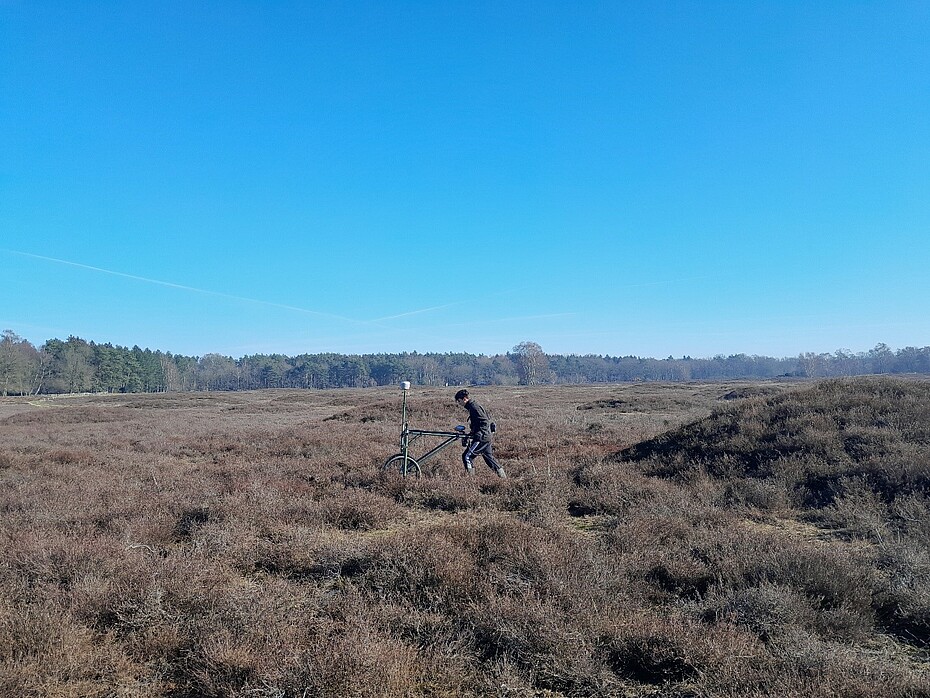
Geomagnetic surveys in the Pestrup burial ground
The Pestrup burial ground near Wildeshausen with over 600 burial mounts is one of the largest in northwestern Europe. Having been used during the period from 1000 to 200 BC it belongs to the period of the preroman iron age.
In order to preserve the valuable archaeological monument as best as possible, an excavation protection area was set up in the 1990s. This not only prevents construction measures but also other soil interventions, including archaeological excavations. Thus, non-invasive prospecting methods are the means of choice to elicit further possible secrets from the Pestrup burial ground.
On the initiative of the Friends of the Prehistoric Center in Wildeshausen, a team from the NIhK has recently geomagnetically examined a part of the burial ground. The aim is to test whether this method can give clues to the number of burials in the mounds or to traces of human activities between the graves. Even if the evaluation of the data has only just begun, it can be said that the measurements provided indications of structures that are not visible on the surface, so that an expansion of the prospecting seems worthwhile.
